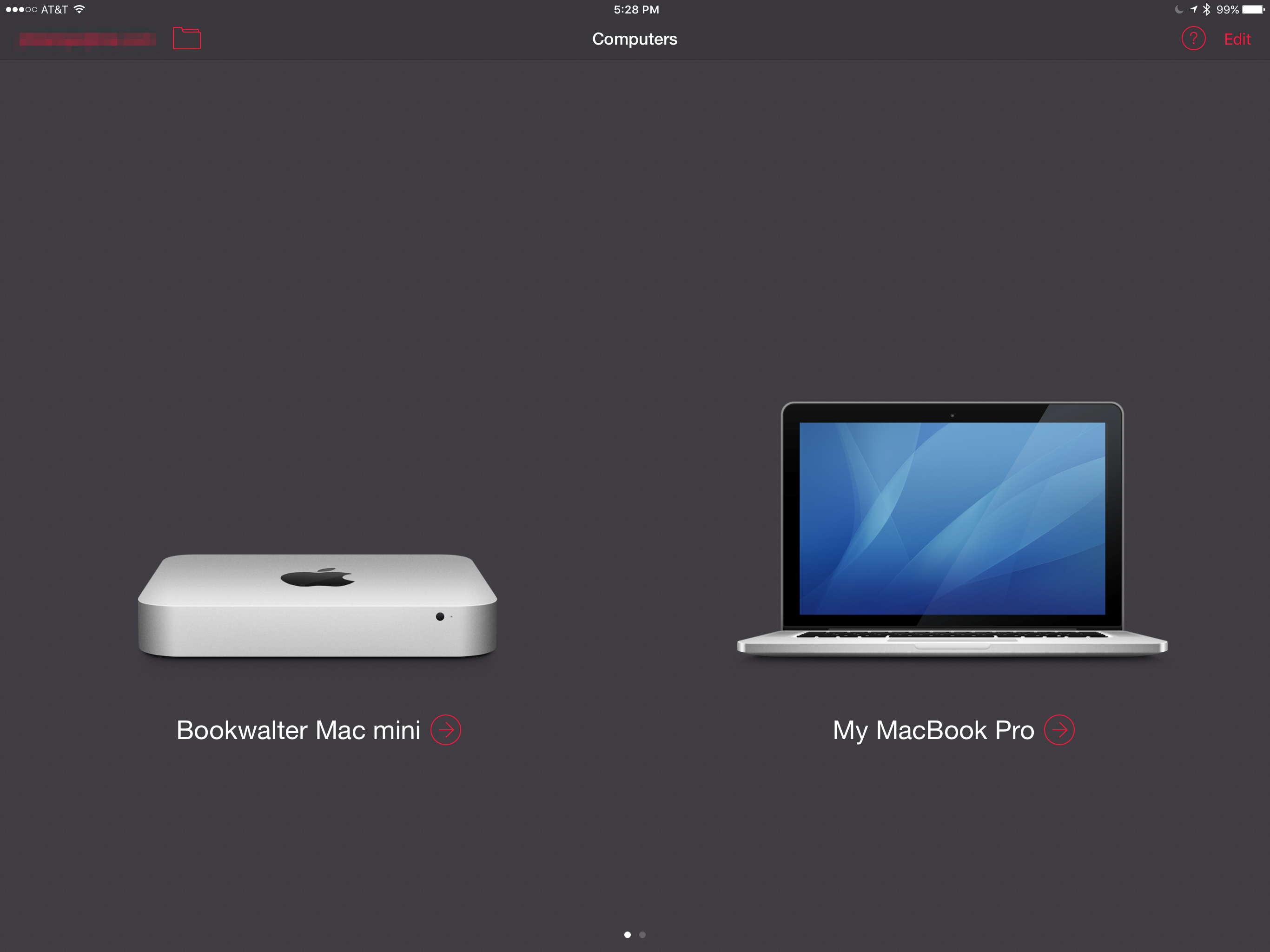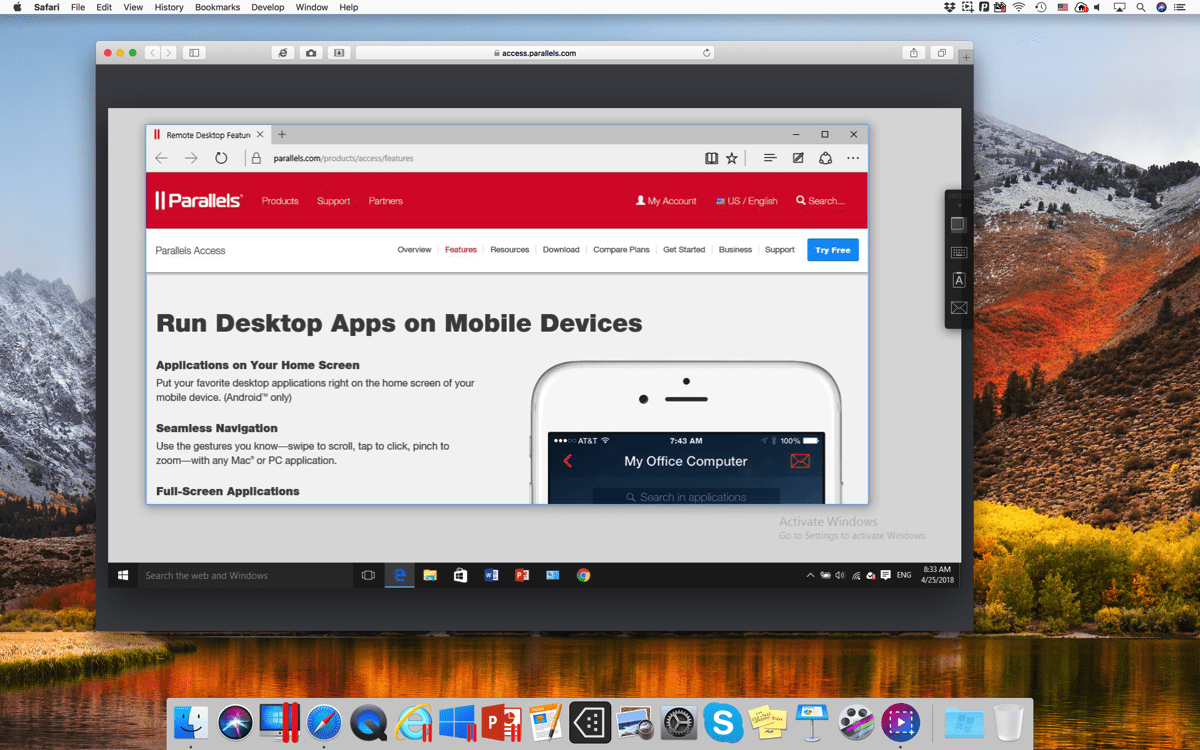Shop for parallels for mac at Best Buy. Find low everyday prices and buy online for delivery or in-store pick-up. 1 day ago iPhones, iPads, and Macs are not the only things getting discounted for Cyber Monday. Mac developers are also offering some pretty sweet deals on their apps to get on the Cyber Monday bandwagon. The deals below are on some quality Mac. I love the holidays. I love the lights, the hot toddies, giving fun gifts to people, and maybe* something for myself while I’m at it. (*In other words, this is the shopping list for myself!). Enter your email address and don't miss out on new posts. Parallels for mac free download. For a limited time, get 20% off Parallels Desktop 13 for Mac at www.parallels.com. Use Mac and Windows applications side-by-side, without rebooting. Bring your favourite Windows applications to Mac—from Microsoft Office to QuickBooks for Windows, Internet Explorer, Access, Visual Studio, AutoCAD, Project, Visio, and more.
Parallels is best known to Mac users as one of the handful of companies—including VMWare and a couple of others—that make apps enabling you to run Windows on your Mac. Now the company is entering a much more crowded niche: Its new iOS app Parallels Access lets you connect to a remote Mac from your iPad and so 'run' Mac apps on your tablet. In doing so, it joins the likes of GoToMyPC, LogMeIn, TeamViewer HD, and SplashTop Remote Desktop, as well as VNC clients like Mocha VNC, among many, many others.
So if Parallels Access isn’t exactly unique in what it does, how does it expect to differentiate itself in that crowded field? By making remotely accessed Mac programs act as much like native iOS apps as possible. Based on my preliminary testing with the app, here’s how it works.
Parallels Access is an unobtrusive Mac OS X application that offers you the possibility to remotely access your computer at any time, through a web browser (Firefox, Safari, Google Chrome and Opera are supported), or by using its iPad, iPhone, or Android companion apps.
Installation and setup
Installing Parallels Access is a simple, two-step process. First you install an iOS client via the App Store. From that client app, you log into your existing Parallels account or create a new one. You then install a Mac “agent” on your desktop or laptop and log into that same account from there; the Mac app must be running in order for the remote access to work. (The Mac installer is smart enough to check your system’s sleep settings and advise you whether you need to adjust them; if your Mac goes to sleep while you’re remotely accessing it from your iPad, you’ll be out of business.) There’s an Access agent for Windows machines, too, so you can control those from your iPad as well.
With those two bits of software in place, you launch the iPad app, which will then show you a list of the Macs that are registered to your account.
Tap on the one you want and you’ll enter a Launchpad-like interface showing you a bunch of your Mac apps. (Which is to say it looks like a standard iOS home screen, but with Mac icons.)

Parallels says that, by default, this initial list shows the Mac apps you use most commonly, but you can add and delete apps as you see fit: Just tap the Edit button in the upper right corner to delete or the plus-sign (+) to add. There’s also a handy search field, which will find any app with your search string, not just those on that default home screen.
The interface
When you tap on one of the icons on that home screen, the Mac app opens smoothly; I noticed no lag between my taps and the app’s response. (That’s not always the case with this kind of remote access.) If you were near the Mac you’re connecting to, you’d see the app open in full-screen mode on your Mac’s display(s). You could type and move the cursor from your Mac input devices, but the interface would be zoomed in on the one app that’s open on your tablet.
Access isn’t just mirroring your Mac’s screen on your iPad: It’s overlaying its own interface on your OS X apps. That means you interact with Mac apps by tapping, tapping-and-holding, clicking, dragging, and so on. A regular one-finger tap on the iPad produces a single left-click on your Mac, a two-finger tap creates a right-click, a slide of your finger scrolls the screen, and so on.
On the right side of the screen, you’ll see a small toolbar with four icons on it. You can swipe over the toolbar left-to-right to hide it, then swipe in from right edge of the screen to have it reappear.
The top icon on that toolbar summons a Dock-like interface at the bottom of the screen, showing all of the apps that are currently open on your Mac. To switch to another app, you tap its icon there.
Below that on the toolbar there’s a Launchpad icon; you use that to summon that initial home screen with your Mac app icons; you can open new apps there.
Next there’s the familiar gear icon for settings. Tap on that to control six settings:
- Additional Keys (which lets you summon special keyboard keys, about which more below);
- Mouse Pointer (tap on that to get a mouse-click toolbar that makes it easier to effect left- or right-clicks);
- Desktop Mode (which gives you a fuller OS X desktop, including the top menubar and the Dock);
- Sound On/Off;
- Feedback; and
- Help.
Windows Access For Mac
Finally, below that Settings icon, there’s a keyboard button that summons the Access keyboard. That keyboard is the standard iOS one, plus a set of special keys at the top: Escape; Tab; F1 through F12 keys; Delete; a button with a grid-like icon on it that, when tapped provides Home, End, PgUp, and PgDn keys; Shift; Ctrl; Alt; Command; and cursor arrow keys.
The Access keyboard doesn’t let you “chord” keys—in other words, you can’t use standard OS X keyboard combinations such as ⌘-B, ⌘-C, and so on. Instead, you must use the iOS-standard context menu (summoned by selecting text or whatever else you’re working on, depending on the app, then tapping the selection). On the plus side, you can use iPad dictation for input in your Mac apps.
Because you’re running OS X, you can run multiple apps at once, switching from one to the other using that app-switcher button in the toolbar. But because you’re in iOS, the Access interface is really optimized for running one app at a time. So if you need to hop among multiple apps, the Access interface could be frustrating.
Tapping on elements of an app’s interface—buttons in the Office ribbon, for example—works really well, in part because Parallels intelligently interprets taps that are close to buttons; you don’t have to hit them exactly.
Final thought
While Parallels Access does indeed provide a nice, smooth iOS interface to Mac programs, that’s not to say the app does so uniquely enough to clearly distinguish itself from the other iPad apps that do much the same thing. For that final word (as well as word on whether and how well you can stream video or transfer files from your Mac to iPad), you’ll have to wait for our review. Parallels desktop 13 for mac cracked.
Parallels Access will sell for an $80 annual subscription; you’ll need a separate subscription for each Mac (and PC) agent you install.
For Business
Parallels Remote Application Server
Parallels Remote Application Server is a leading solution for virtual application and desktop delivery. It provides Windows applications to anyone using any OS or mobile device.
Parallels Desktop for Mac allows you to seamlessly run both Windows and Mac OS X applications side-by-side with speed, control and confidence. Click below for frequently asked questions, documentation and other helpful tools to get the answers you need. Visit KB 123904 for information on the Mac. Parallels desktop 13 for mac. View a manual of the Parallels Desktop 8 Mac below. All manuals on ManualsCat.com can be viewed completely free of charge. By using the 'Select a language' button, you can choose the language of the manual you want to view. Parallels Desktop 13 for Mac release build 13.0.0 (42936) includes the following new features: Parallels Desktop® 13 for Mac is the simplest, most powerful solution for running Windows and Windows applications on Mac® without rebooting. I purchased Parallels Desktop 9 for Mac download from Amazon a few days ago. There was no documentation with it, I didn't understand what was happening with the download, I've had nothing but trouble with the program, my Windows programs take forever to load and the issues just seem to.
Parallels Desktop for Mac Business Edition
Parallels Desktop for Mac Business Edition is built on the world’s best desktop virtualization solution, but also incorporates centralized administration capabilities to keep IT in control of virtual machines.

Parallels Desktop for Mac Pro Edition
Designed for the developer, tester, or power user who needs the very best performance for running non-Mac apps on Mac.
Parallels Mac Management for Microsoft SCCM
Seamlessly extend your existing Microsoft SCCM infrastructure to discover, enroll and manage Mac computers through a single pane of glass.
For Home
Parallels Desktop for Mac

The fastest, easiest, and most powerful solution for running Windows applications on a Mac—without rebooting. Now includes Parallels Toolbox to easily perform essential tasks.
Parallels Toolbox for Mac & Windows
Parallels Access Mac Localhost
Parallels Toolbox for Mac includes the Mac® & Windows® tools you’ve always wished you had at your fingertips—at the low price of a single app.
Parallels Access
Easily access your desktop computer, and run applications as if you were sitting at your desk, from anywhere in the world, on any device.